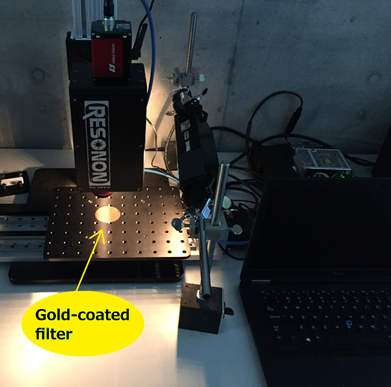Press Releases

JAMSTEC
Development of a new technique for rapidly detecting and classifying microplastics
– Advancement toward the automatic measurement of marine debris based on hyperspectral imaging –
1. Key points
- ◆
- A convenient technique was developed for the rapid detection and classification of various microplastic particles as small as 100 μm based on hyperspectral imaging.
- ◆
- A scan over a 1 cm × 1 cm detection area takes only ~10 seconds, which is ~100 times faster than previously employed methods.
- ◆
- Application of this technique is promising for the automatic detection of marine microplastics.
2. Overview
Microplastics, which are defined as plastic particles with diameters of less than 5 mm, have been ingested by and accumulated within many organisms. Thus, global concerns over the adverse effects of microplastics on marine ecosystems are increasing. Chunmao Zhu of the Research Institute for Global Change at the Japan Agency for Marine–Earth Science and Technology (JAMSTEC) and colleagues have developed a new technique for rapidly detecting and classifying microplastics based on hyperspectral imaging (Figure 1).
Currently, one of the most common methods used to detect and characterize microplastic particles is to collect samples with neuston nets followed by time-consuming separation and quantification procedures in a laboratory. However, only microplastics larger than 300 µm are generally detected, due to the limitations imposed by net mesh sizes. Here, a new and convenient technique for rapidly detecting and classifying microplastics as small as 100 μm in diameter is reported. Detection is based on the intrinsic spectral properties of microplastic polymers. Specifically, the spectral features of 11 types of authentic plastic polymers, such as polyethylene (PE), polypropylene (PP), and polystyrene (PS), in the near-infrared wavelength range of 900–1700 nm were clarified (Figure 2). Based on the similarities of such features, the microplastic particles of these materials were successfully classified.
With constant reflectance over the 900–1700-nm range and a large radiative contrast against loaded microplastic particles down to 100 µm in diameter, a gold-coated polycarbonate filter was found to be a suitable filter substrate for directly detecting microplastics following seawater filtration (Figure 3). Application of this technique appears promising for the automatic detection of microplastics with diameters of less than 300 µm in aquatic environments. In the future, this technique will be evaluated for the detection of microplastics in seawater samples, and then an automatic detection system will be developed.
The study reported on here was partly supported by the Ocean Resource Use Promotion Technology Development Program, Ministry of Education, Culture, Sports, Science and Technology of Japan [Grant No. JPMXD0618067484].
The results were published online in Environmental Pollution on March 27, 2020 (JST).
- Earth Surface System Research Center, Research Institute for Global Change, JAMSTEC
- Marine Biodiversity and Environmental Assessment Research Center, Research Institute for Global Change, JAMSTEC
- Institute for Extra-cutting-edge Science and Technology Avant-garde Research, JAMSTEC

Figure 1. Schematic of the development of a new hyperspectral imaging technique for detecting microplastics. Microplastics of different polymer types are classified based on the reflective spectra (shown in Figure 2) in the near-infrared wavelength. With the aim of detecting aquatic microplastics directly after filtration, the optical properties of various filter materials were examined to minimize interference (and to maximize contrast) with the target microplastic particles.

Figure 2. Spectra of 11 common plastic polymers in the near-infrared wavelength (900–1700 nm). Microplastics showed low reflectance (e.g., marked by arrows for PE, PP and PS) over wavelengths specific to the materials. Using the spectra for reference, the (smaller sized) microplastics of these materials were investigated for detectability and classification.

Figure 3. Example of the successful classification of PE, PP, and PS particles onboard a gold-coated polycarbonate filter, with sizes of 300 μm (above) and 100 μm (below). (Left) Spectra; (Middle) RGB images; (Right) classified images based on reference spectra. Microplastics as small as 100 µm in diameter were distinguished based on the similarity of each spectrum (low reflectance at material-specific wavelengths as marked by arrows) to the references shown in Figure 2.

Reference: Photo of hyperspectral imaging system and gold-coated polycarbonate filter. A hyperspectral camera of ~30 cm in length was used.
Contacts
- (For this study)
- Chunmao Zhu, Scientist, Earth Surface System Research Center, Research Institute for Global Change, JAMSTEC
- Yugo Kanaya, Principal Scientist, Earth Surface System Research Center, Research Institute for Global Change, JAMSTEC
- (For press release)
- Public Relations Section, Marine Science and Technology Strategy Department, JAMSTEC